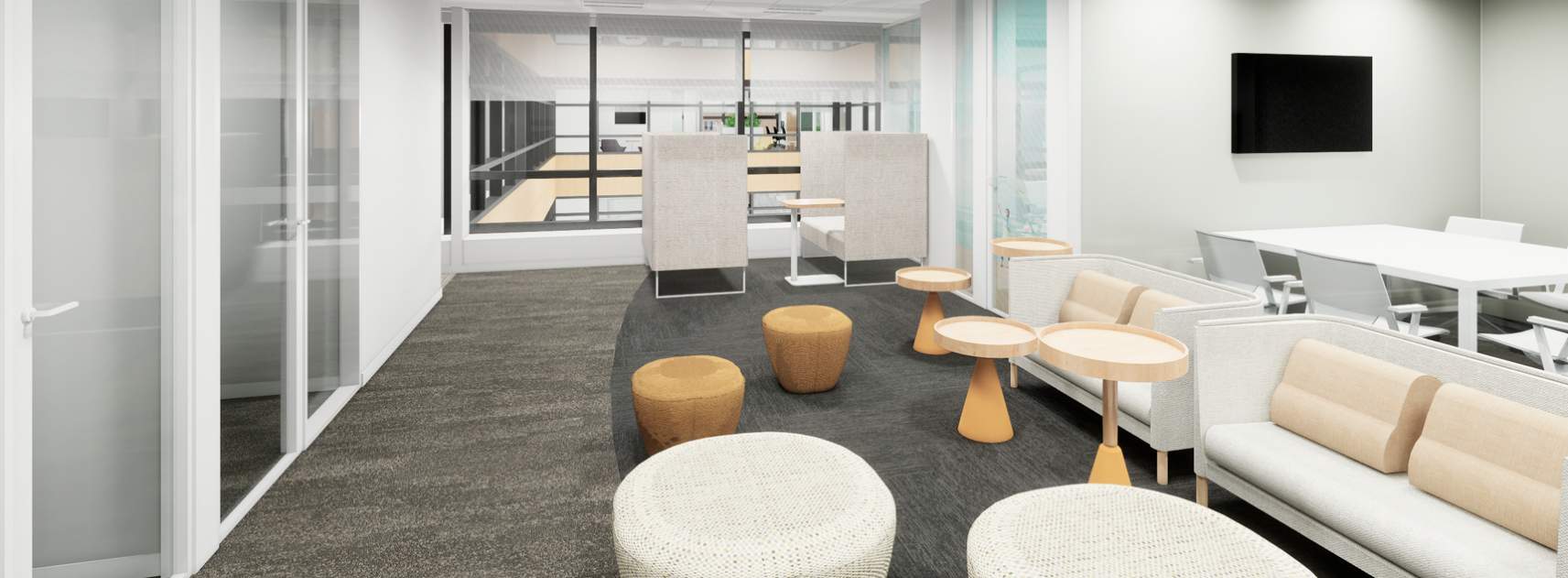Interview with Jordi Llargués, Strategic Facility Manager BAYER Barcelona.
1. How did the need to update the Bayer workspace arise?
We began the project in 2017, with a technical-economic approach driven by the necessity to renovate the building due to its inevitable need for updates and machinery, which meant that our organic costs were high.
What was initially planned as a discourse on costs evolved to its current narrative of transformation, overcoming cultural resistances, and managing change. We sought a space that reflected our values of flexibility, efficiency, innovation, and a focus on creativity. The project also came in the midst of a merger with another part of the company, so both dimensions had to be shaped and co-created. This posed interesting challenges.
The project began by seeking to create efficient spaces from the operating standpoint so that they were both profitable and costefficient. Now it has evolved toward viewing the space as a strategic catalyst which seeks to create values and culture. Now it’s no longer an architecture or interior design project but a shift in management and leadership.
2. How has the pandemic affected the way you work, and what changes has it brought about, if any, in the conception of your workspace? What things have changed compared to before COVID-19 in terms of the offices?
COVID-19 has led us to continue evolving the initial model and planning. We have become even more flexible in adapting our workspace transformation process. We want our Barcelona headquarters to reflect what we have learned from a time like this, with all the changes brought about by the pandemic in terms of both our employees and at a regulatory level with the new law. This has led us to evolve the approved model and continue tinkering with it even further.
In Barcelona, we have traditionally had a seven-floor corporate headquarters in Sant Joan Despí measuring 9,800 m2, with a total of 477 employees at the beginning of the project, in 2017. From the initial plan to occupy five of our seven floors, ultimately we are occupying just three and earning profits on the others from third-party renters and setting up some as coworking spaces.
Space is finally understood as a catalyst for many other things.
3. What does flexibility mean for a company like Bayer?
Flexibility was already a value in our corporate culture. Today it is just further reinforced. The way we have set up the different work categories and formats according to the mix, as well as the combination of in-person and remote work, reflect this. There are different levels of hybridization which encompass everything from the concept of the home office, with four or five days spent working from home (30% to 35% of employees); to a flexible concept, where employees are estimated to be at home 2.5 days (60% of employees) and the remaining days at the office; to a fulloffice concept, where employees will be at the office four or five days a week (5% to 10% of employees). Logically, this has to come with contractual compensations and adjustments, as well as the proper conditions to work in each place, and of course it adapts to each job, profile, and responsibility, and the unions and workers’ committees play an important role in this.
Flexibility opens up new doors and opportunities in attracting new talent as well.
Focusing on a flexible model means focusing on empowering employees, with all the responsibility and commitment this entails.
4. How do you create a culture of flexibility?
Before COVID-19, we had a work-balance strategy which we have now renamed smart working to introduce new aspects that we’ve learned and come to value through the pandemic.
Nobody questions whether there are preassigned workstations anymore, because the discourse among the managers and their teams is not about stations or spaces but about employee responsibility and empowerment, so they can work autonomously, asynchronously―even in timetables―from their supervisors. It is a discourse that has become about trust, not micromanagement. Even time flexibility has enabled more and more employees to participate in transversal projects with other teams from other countries. It’s as if management has lost its importance from the control standpoint and taken on a dimension of true leadership and trust, as well as responsibility.
We have digitalized jobs at all levels, from the app to reserve our spaces to the tools and technologies that allow for remote work. And this is no longer about job profiles but ways of working and work cultures. In this sense, the office space is more a meeting point than a place you are obligated to be.
5. In your project to transform the spaces, and in this entire phase we are going through, have you learned anything that surprised you that you’d like to share with our readers?
Our pilot project is being extrapolated at other branches in other countries, and we’ve learned a lot. One of the most important lessons is adaptation and flexibility. Another has been managing all the parties involved in the change processes. Something that’s been a reality check is the importance of seeing how, when transforming spaces, the same human concerns arise, and that sometimes there is a need to approach people and explain the changes and transformations not only from the operational standpoint but also from a psychological and emotional point of view.
